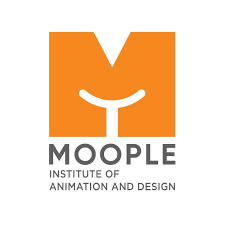Such a fantastic tool is a picture editor and image creator in Photoshop. Its learning curve is tough, but if approached right, you’d find yourself in the best possible place to be a master of it. Here’s how you could cover the basics, proceed with the key tools, and hone your skills without a doubt. A complete Photoshop course can help you go through learning faster and better.
1. Start With The Basics
Before you get on your high horse with advanced edits, get familiar with some of the basics. Let’s start understanding what sort of layout and general instruments there are. Now is where a Photoshop full course comes in handy-it teaches you key elements including.
- Layers: Layering is the main purpose of Photoshop. They can enable you to separate your components. Learn how to develop, edit, and position layers.
- Brush Tool: The brush tool is a must for retouching and blurring. Learn the settings of the brush like the size, hardness, and opacity.
- Selection Tools: Learn the use of the marquee, lasso, and quick selection tools. These will help cut, move, and transform parts of your image.
- Basic Adjustments: Get familiar with basic adjustments that include brightness, contrast, and saturation.
2. Move To Intermediate Skills
Once you get the basics going, you are set to move ahead and focus on more intermediate features of Photoshop. This level would give you deeper skills for editing your photos and ensuring they look professional. A complete Photoshop course would focus on an area encompassing the following.
- Masking: Most non-destructive edits apply masking. Learn how layer masks are applied and refined using edges.
- Text and Typography: Photoshop has powerful capabilities in the field of text editing. Practice adding, adjusting, and tailoring the text for a unique design.
- Blending Modes: Learn how to apply blending modes in making image combinations. Practice a few blending effects such as Multiply, Screen, and Overlay to give a whole new depth to your designs.
- Pen Tool: It is a powerful tool in case one wants to draw a detailed path or shape. One needs to practice the skill, but worth the effort.
3. Practice Photo Manipulation Techniques
Photo manipulation is one of the exciting skills in Photoshop. It is the skill of altering images to create unique visuals. Some techniques you’ll find in a Photoshop full course are as follows.
- Retouching and Healing: To remove undesired objects from the photo image, use the clone stamp healing brush tool, or a spot healing brush.
- Color Grading: Color grading changes the tone of colors in an image. Look for the correct balance of colors, curves, and levels to set your mood.
- Filters and Effects: These include Gaussian Blur and High Pass in Photoshop. These are used for different artistic effects or to clear pictures.
4. Learn Advanced Techniques
To be a full master of Photoshop, there are advanced skills you ought to learn. They will enable you to create elaborate designs as well as detail edits covered in the Photoshop full course.
- Smart Objects: You turn layers into smart objects and start editing non-destructively so that you do not have to worry about the layers losing quality even after resizing.
- 3D Tools: Photoshop contains 3D tools with which you can add depth to images. Try different shapes and realistic lighting.
- Advanced Compositing: Learn how to bring two images together to form an exclusive composition. All these will take your Photoshop skills to the next level.
- Action Scripts: The use of Photoshop Action helps you to save much time, particularly while working on bulk editions.
5. Build a Portfolio
Then you are supposed to create a portfolio to fully show your Photoshop skills. Your portfolio will include basic edits, complicated composites, and weirdly unique creations. A portfolio will be of immense importance to you if you are learning complete Photoshop course for the advancement of your career; you will get priceless practice by creating:
- Varied Projects: Showcase skills from photo retouching to digital art.
- Regular Updates: Keep updating the latest projects you are working on.
- Professional Feedback: Get professional reviews of your work to review your portfolio.
6. Continue Learning
The constant development in Photoshop is ensured because of the new tools and techniques added to it. Stay updated by searching on the web for tutorials or an advanced workshop. Completing a course in Photoshop will ensure you do not miss this new feature. You must keep experimenting with new techniques so that you will be sharp and know that which tool you are using today, is the latest that Photoshop offers.
Conclusion
Mastering Photoshop takes time, but one can achieve it if dedicating oneself to the right process. Start from the most basic and then to the intermediate and advanced techniques to master the software. As you keep learning, have a portfolio of your work and continue to learn about new techniques. To give you a structured and thorough learning experience, Moople Institute of Animation and Design has a complete Photoshop course that will equip you with both foundational and advanced skills.

